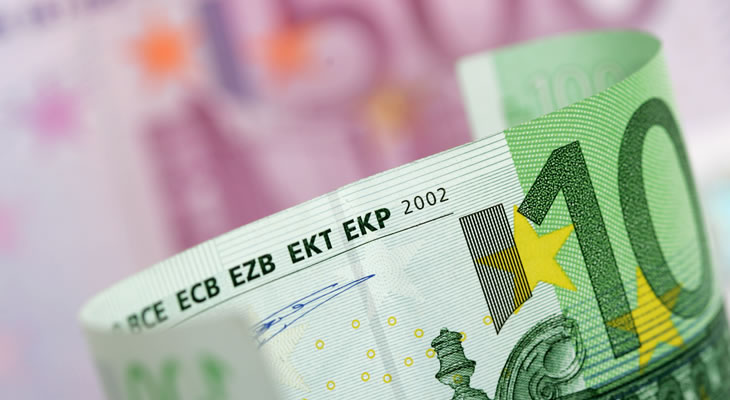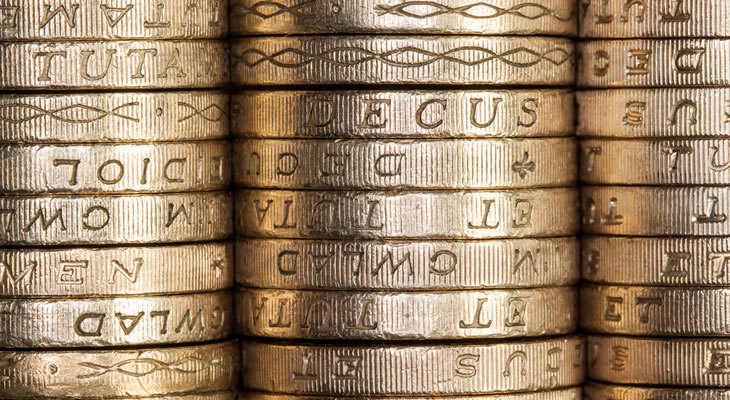- Euro (EUR) Bolstered by Growth News – But fails to advance considerably
- Pound (GBP) Surges on Tuesday – Polls and ‘fat finger trade’ influence Pound rally
- UK Manufacturing Beats Expectations – Does little to sway Sterling movement
- Forecast: UK Trade Balance on Thursday – Plus German trade reports
The Euro to Pound Sterling (EUR/GBP) exchange rate fell from its highs on Tuesday after a mistake ‘fat finger trade’ and an ORB ‘Brexit’ poll showing a ‘Remain’ lead left the Pound bullish across the board. Positive Eurozone growth data did little to shift movement in the Euro’s favour.
EUR/GBP soared to a near-month-high of 0.7899 on Monday before falling to a weekly low of 0.7708 on Tuesday. At the time of writing, the pair had since returned to near the week’s opening levels and trended in the region of 0.7822.
Euro (EUR) Sturdy on Eurozone Growth Data
Tuesday’s session saw the Euro entirely influenced by movement from its rivals, despite unexpectedly positive Eurozone data being released.
A bullish Pound as well as readjustments from US Dollar investors left the Euro limp. US Dollar investors had previously flocked to the Euro when Federal Reserve rate hike bets plummeted and investors sold the Dollar on its highs, but have since returned to it.
While expected to be relatively influence-light, Tuesday’s final Q1 Eurozone Gross Domestic Product (GDP) report revealed that growth in the Eurozone had been better-than-expected in the first quarter of 2016.
Widely expected to match its preliminary score of 0.5%, the quarter-on-quarter print instead scored 0.6%. The year-on-year figure came in at 1.7%, beating expectations of 1.5%.
However, these impressive results did little to inspire Eurozone movement during Tuesday’s session as the Pound took point. It may however be responsible for the Euro’s Wednesday sturdiness.
Pound (GBP) Limp on Wednesday Despite Surge in Manufacturing Production
The Pound may have exhausted its bullishness for the week during Tuesday’s session, which saw it rally against most major rivals (including the Euro) and recover from its Monday lows.
A suspected ‘fat finger trade’ (that is, a mistaken trade) during the Asian trade session influenced a spike in Sterling appetite.
Following that, investors throughout the day reacted to the latest ORB Referendum poll. While those asked who fully intended to vote saw an extremely close result of 48% to 47%, the poll still resulted in the ‘Remain’ camp’s favour. This slightly increased investor hopes that a ‘Brexit’ would be avoided.
Wednesday’s session was largely positive for UK data, but the Pound fell flat regardless. British industrial and manufacturing production reports, despite having low expectations and poor previous scores, saw improvement in every major print.
Industrial production improved from -0.2% to 1.6% year-on-year, while manufacturing improved from -1.9% to 0.8% year-on-year. Perhaps most surprising was the month-on-month manufacturing score, which improved from 0.1% to 2.3% despite analysts expecting a stagnant result of 0.0%.
Bloomberg said of the data;
‘The figures will boost hopes for the second quarter after two consecutive quarters of falling industrial output. The data contrast with surveys showing lacklustre activity as the referendum on European Union membership and ailing global growth take their toll.
The main driver behind manufacturing in April was the pharmaceuticals sector, where output rose 8.6 percent — the largest increase since February 2014 — mainly on exports. Domestic demand boosted car production. Overall, 10 out of 13 manufacturing sectors increased production in April.’
However, some analysts believe that the Pound failed to strengthen on Wednesday due to a row over the possibility of extending the deadline to register in the EU referendum.
When the deadline hit on Tuesday night, some were unable to register last-minute due to difficulty with the registration website. As a result, some have demanded an extension.
Euro to Pound Sterling (EUR/GBP) Exchange Rate Forecast: Trade Data Ahead
Thursday will see the release of trade reports for Germany and Britain. Germany’s data slew will include the latest trade surplus update, as well as figures on exports, imports and labour costs.
The latest update to the British trade deficit is also due. The deficit is currently expected to lighten from -£3.83b to -£3.55b
However, even if a slight improvement is made, investors may not react favourably to the Pound if the deficit shows that it is increasingly unlikely to meet Chancellor George Osborne’s targets.
Investors may also react to a speech from European Central Bank (ECB) President Mario Draghi on Wednesday morning. While analysts do not expect key statements on monetary policy when he speaks in Brussels, potential statements could inspire Euro movement if trade is otherwise quiet.
As always, investors are certain to pay attention to the latest ‘Brexit’ debates. As of Thursday, the date of the EU Referendum vote will be a mere fortnight away.
As a result, the Pound’s volatility will continue to worsen and could see Sterling trade fluctuate more widely in regards to even the smallest shift in ‘Remain’ or ‘Leave’ sentiment.
The Euro to Pound Sterling (EUR/GBP) exchange rate currently trends in the region of 0.7822, while the Pound Sterling to Euro (GBP/EUR) exchange rate trades around levels of 1.2785.



Comments are closed.